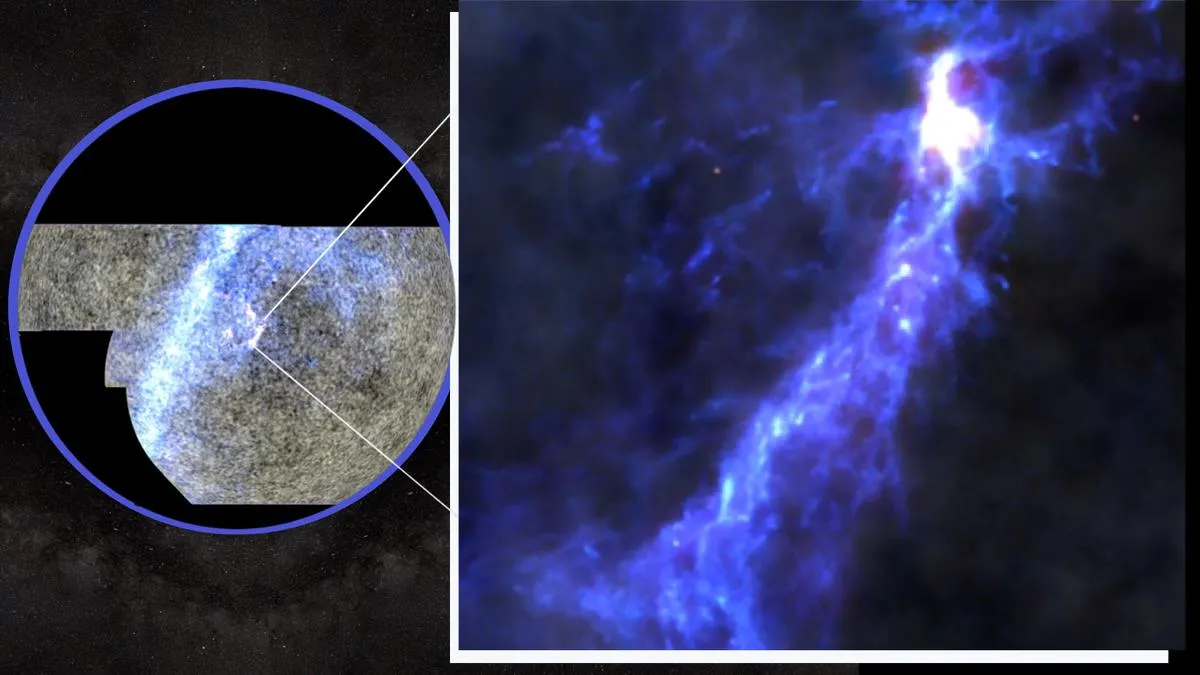
The latest images of the infant universe captured by the Atacama Cosmology Telescope (ACT) are heralded as the most precise "baby pictures" of the cosmos to date. These remarkable images provide an unprecedented glimpse into the universe's initial stages, showcasing its journey toward the formation of the first stars and galaxies. The data illustrates the cosmic microwave background (CMB), which serves as a fossil relic of the universe's first light, revealing what the cosmos was like just 380,000 years after the Big Bang, approximately 13.8 billion years ago.
This groundbreaking achievement from ACT has been instrumental in validating the standard model of cosmology, which is currently the best framework we have for understanding the formation and evolution of the universe. The images not only confirm the robustness of this model but also show the intensity and polarization of the earliest light with unmatched clarity. The new data from ACT depicts the movement of ancient gases as they are influenced by gravity, highlighting the formation of primordial clouds of hydrogen and helium that will eventually collapse to create the first stars. "We are witnessing the universe's first steps toward forming the earliest stars and galaxies," stated Suzanne Staggs, director of ACT and a researcher at Princeton University.
Staggs emphasized the importance of the polarization of light captured by ACT, which distinguishes it from previous telescopes such as Planck. While earlier data provided insights into the conditions of the early universe, the new ACT findings have not yet offered solutions to one of cosmology's biggest challenges: the Hubble tension.
Before the universe reached the 380,000-year mark after the Big Bang, it was shrouded in darkness. At this stage, the cosmos was incredibly hot and dense, filled with plasma and unbound electrons that scattered photons endlessly, preventing light from traveling freely. Once the universe expanded and cooled to around 3000 Kelvin (approximately 4,900 degrees Fahrenheit), electrons combined with protons to form neutral hydrogen and helium atoms, allowing photons to move unobstructed. This event, known as the last scattering, rendered the universe transparent for the first time, and the first light we see today as the CMB emerged.
The CMB, while ubiquitous throughout the universe, contains minute variations known as anisotropies, which are remnants of tiny fluctuations in matter density during the last scattering. As the farthest back in time that astronomers can observe through light, the CMB is an invaluable tool for tracing the evolution of the universe.
Positioned high in the Chilean Andes, ACT captured this ancient light that has traveled for over 13 billion years. Prior to this, the most detailed images of the CMB were provided by the Planck space telescope. However, ACT boasts five times the resolution of Planck and enhanced sensitivity. According to team member Sigurd Naess from the University of Oslo, "This means the faint polarization signal is now directly visible." Although other contemporary telescopes measure polarization with low noise, none cover as much of the sky as ACT.
The polarization signature reveals the motion of hydrogen and helium gases in the early universe, highlighting regions of high and low density in the primordial hydrogen and helium sea. These early cosmic hills and valleys extend millions of light-years across. Over billions of years, gravity pulled the denser regions inward, leading to the formation of stars and eventually galaxies. Jo Dunkley, ACT analysis leader and Princeton University researcher, stated, "By looking back to that time, when things were much simpler, we can piece together the story of how our universe evolved into the rich and complex place we see today."
This cosmic journey back in time has revealed that the observable universe stretches approximately 50 billion light-years in every direction. The universe's total mass is estimated to be around 2 trillion trillion suns, with 100 zetta-suns composed of ordinary matter, primarily hydrogen and helium. An additional 500 zetta-suns are attributed to dark matter, while dark energy accounts for 1,300 zetta-suns, driving the universe's accelerating expansion. Tiny, nearly massless particles known as neutrinos contribute around four zetta-suns of mass, moving through our bodies unnoticed at an astonishing rate.
The findings from ACT have refined estimates of the universe's age, aligning with the widely accepted figure of 13.8 billion years, with a mere 0.1% uncertainty. Moreover, the data has provided insights into the rate of cosmic expansion in the early universe, with matter sending out waves through space akin to ripples on a pond. ACT deputy director Mark Devlin noted that a younger universe would have required a faster expansion to reach its current size, which would have altered the apparent extent of these ripples.
One of the significant challenges in cosmology today is the Hubble tension, a discrepancy in the rate of the universe's expansion. Measurements of nearby galaxies suggest a Hubble constant of 73 to 74 km/s/Mpc, while CMB measurements yield a lower value of 67 to 68 km/s/Mpc. Utilizing the high-resolution images from ACT, researchers obtained new measurements of the Hubble constant, which aligned with previous CMB-derived values.
Researchers aimed to explore alternative cosmic models to address the Hubble tension, including modifications in neutrino behavior and the introduction of an early era of accelerated expansion. Colin Hill, a Columbia University researcher, emphasized the exploration of the CMB as a detector for new particles or fields in the early universe. However, the ACT data showed no signs supporting these alternative models, reinforcing the accuracy of the standard model of cosmology. "It was somewhat surprising that we didn't find even partial evidence for the higher value," Staggs remarked. The ACT telescope completed its observations in 2022 and has since been decommissioned, with astronomers now focusing on the new, advanced Simons Observatory in the same Chilean location.